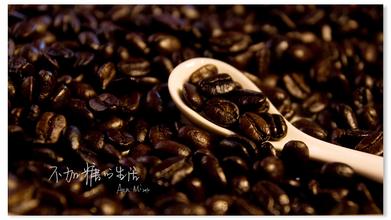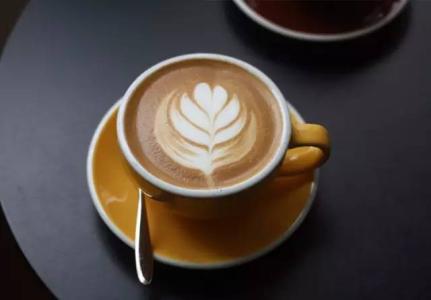Internet changes competitive strategy-coffee consumption in China continues to grow by 15% to 20% annually
Sculpture time: the Internet changes competitive Strategy
Starbucks, which claimed to be a coffee e-commerce platform several years ago, repeatedly delayed its launch plan and finally decided to focus its online business on "membership services". On December 15, 2014, to the surprise of the coffee chain, carving time (hereinafter referred to as "Diaoguang"), a 17-year-old local coffee chain, built a professional coffee website in just six months.
On the day Hello coffee was officially launched, we saw almost all the world's top coffee brands, raw material suppliers, coffee-making utensils, coffee peripheral products, and even competitors' Banner on the literary and artistic page. It can be seen on this site that carving time is trying to break the shackles of competition and work with coffee brands to create a focused and perfect supply chain of coffee and its surrounding formats.
Zhao Kedong, CEO of Dioguang, told Business value: "in the course of 17 years of operation, we have gradually discovered that there is no real professional and perfect platform in China to guide how to choose our own coffee taste from thousands of coffee categories. We firmly believe that those who know how to appreciate coffee will know how to taste coffee and become Bole who appreciates coffee. Our original intention is very simple: we want friends who are full of love for coffee to stop worrying about the source and safety, to select more professionally, to find a platform full of coffee feelings, to taste coffee together, and to evolve into a Bole who understands life and coffee. "
In 1997, when Chuang Tsai, a Taiwanese boy, opened the first sculpture time cafe outside Peking University, this small shop with JAZZ or Bossa Nova music became a gathering place for Chinese intellectuals and literary youth. In 17 years, carving time has opened more than 40 branches in 20 cities across the country, and completed two rounds of financing.
Under the big brand of carving time, it has formed collectivized enterprises with sub-brands such as "Shangda Public Relations Company", "Border Design Company", "Qige clothing", "Life Market", "Coffee College", "Hello coffee" and so on. Founder Zhuang Yueli does not deny that they are making adequate preparations for the "listing". Zhao Kedong added: "if it were Taiwan or the new third board, we would have been on it years ago, but we don't want to go public for the sake of listing."
The goal of Zhao Kedong and Zhuang Yuli is to turn the carving time into a "century-old shop", but under the main theme of "slow style", Internet practice is achieving their "fast pace" in business. The idea of "building a website" came into being in June 2014.
"many of my friends are in the Internet circle, and communicating with them makes me feel that 'change' in traditional industries is imperative. Many of our colleagues think that having a shop in 'Tmall' and 'JD.com' is the Internet. I think if we want to do it, we should do it in place. "
Hello coffee's team was only built in July and was officially launched on December 15th. Zhao Xin, head of the Hello coffee team, stressed that this is China's first coffee B2C website, and there will be no competitors for content in the coming year.
"the coffee industry is not mainstream enough in China. There will be no more than 100 good coffee merchants in Beijing. Now 60 have signed up to Hello coffee. We want to be a professional coffee vertical e-commerce. Except for large-scale chain stores like Starbucks, those coffee shops with characteristics will become our merchants."
At present, Hello coffee has a three-dimensional warehouse of 1000 square meters and has signed contracts with four logistics companies. In the coming month, APP clients will also be launched. Zhao Kedong said that when Dioguang opened its first coffee shop, Starbucks had not yet entered China. Today, Dioguang's competitors throughout the country, the increasingly mature coffee consumer market, attracting different styles of coffee brands to join this enclosure war. Local cafes should not only play a good cultural card, but also continue to cultivate the market.
Fortunately, they have learned to use the power of capital and the advantages of the Internet to provide a greater stage and influence for brands. Competition cannot be confined to one dimension.
Starbucks: marketing Strategy under Fast consumption
The American coffee chain led by Starbucks has sprung up everywhere in China's major shopping malls and office buildings. it is undeniable that no one is second to none in the chain coffee brand. Although COSTA tries its best to imitate and follow, it is also eating away at Starbucks' market, but it has never been able to form a competitive force against it.
Born in 1971 at Starbucks Cafe in Seattle, USA, it was formerly a coffee bean supplier. After running a small green cafe, founder Schultz unexpectedly achieved commercial success and dominated the coffee chain market 20 years later, becoming a global enterprise.
Like all American fast food restaurants, Starbucks has found in market practice that Americans are not willing to spend a long time in a cafe with a cup of coffee like the French and Italians. Thinkers and writers such as Hemingway, Balzac and Freud prefer to spend their time in the "God of Flowers" cafe on the left bank. Americans in the 1970s are in a period of struggle, their pace of life is very fast, believing in the value of "time is money".
For operators, the long stay of customers means that sales slow down, and sales can continue to increase only when customers are mobile. The process of making coffee has also been greatly simplified. Starbucks uses a fully automatic coffee machine that takes only two minutes to make a cup of coffee. The new products of each season are blended through "fruit paste". From receiving a guest to producing a cup of coffee and handing it over to the guest, the time is precisely controlled.
There are not many seats in Starbucks cafes, and the seats and environment are not comfortable, because Starbucks encourages guests to "take out". Implement the strategy of using takeout cups, and constantly improve the design and functionality of takeout cups, so that guests are more willing to walk out of the cafe with paper cups. This model also contributes to Starbucks' most effective takeout marketing tool-star effect. In fashion magazines, Britney Spears? Spears, Baker-Ham, Anne Hathaway, Rihanna.
Well, you have to admit that all the stars you know like to have a Starbucks in hand when shooting on the street. Starbucks paper cups are the best ornaments, it makes them look more casual, and Starbucks seems to mean taste. Indeed, in the coffee industry, only Starbucks has fully integrated with fashion, and even become a measure of whether a person is fashionable or not.
Apart from the US, China has become Starbucks' largest consumer market, and Schultz mentioned the Chinese market three times at shareholder meetings. "Starbucks plans to open 1500 stores in 75 Chinese cities in 2015," he said.
Seeing the huge market capacity of China, Starbucks is also constantly adjusting its strategy. Now, Starbucks has taken back almost all its franchise stores, with the exception of individual partner stores in Shanghai, all of which are direct stores. Starbucks Asia Pacific Director told Business value, "operating direct stores can better control the quality of services and products, as well as the pulse of the entire Chinese market."

Important Notice :
前街咖啡 FrontStreet Coffee has moved to new addredd:
FrontStreet Coffee Address: 315,Donghua East Road,GuangZhou
Tel:020 38364473
- Prev

Forecast of seven trends in the development of brand chain 2017 coffee shops
Set up a low bar on all sides in the central area, the seating area is around the bar, and the height of the tables and chairs is set below the waist after accurate measurement, so as to keep everyone's line of sight at a comfortable height. The fully open design of ▲ 's open bar allows customers to watch all the steps from baking beans to filling coffee. Unexpectedly, also
- Next

Korean coffee set off a new trend of "one cup, two drinks".
Where there are Korean dramas, there is coffee, and coffee is very popular in South Korea. Recently, there has been a new trend of coffee in South Korea, that is, two drinks in one cup, and one cup of coffee can enjoy both flavors at the same time. Let's take a look at what this is all about. Recently, a cafe in South Korea has launched a coffee sharing cup, which has attracted a lot of fans as soon as it is launched. Go to the cafe to buy coffee, often
Related
- Being chased out of the rain in front of Starbucks?! Store: Sheltering from rain under umbrellas poses a safety hazard
- The white moonlight has changed?! Lucky launches "Big Winter Pear American"
- Hand-brewed coffee three-stage method, high-sweet and universal brewing method to share! What does the high sweet water level of hand-brewed coffee mean?
- What is the difference between raw, refined and full espresso coffee? How to extract espresso and taste good?
- A complete list of coffee bean names and their meanings! What is Yejia Shefi coffee? Where is Mantelin coffee?
- What grade does Arida Manor Kaduai coffee beans belong to? What treatment is Arida ASD slow anaerobic sun exposure?
- The milk tea cup becomes smaller?! Overlord Tea Girl launches a new "Return to Yunnan" series
- Accused of selling counterfeit and high-priced coffee beans! Well-known boutique coffee brand "Oukelao" bowed and apologized!
- How to make espresso dumplings? Can I eat coffee and glutinous rice balls together?
- Save the unformed and stagnant powder cakes in one second! What is the problem with stagnant water in the powder bowl of the espresso machine?

